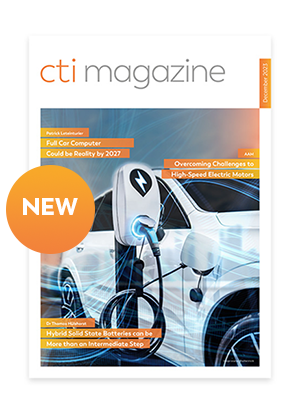As ever stringent targets for improved energy efficiency and reduced tailpipe emissions become more demanding to meet, automotive OEMs are waging a fierce battle against powertrain losses of all types. Sylvain Bussit, Product Line and Business Development Manager for Powertrain at SKF explains how innovative bearing design and specification in the transmission area can help.
Aktiebolaget SKF (publ)
Download CTI Mag to read full article
Issue: #December 2017
The drive for better energy efficiency continues to be a core focus of innovation for automotive vehicle manufacturers. However, this focus cannot be viewed in isolated – the demands of the automotive industry dictate that energy efficiency must be delicately balanced with ease of assembly, long service life and good noise and vibration characteristics.
In looking to meet these demands, leading automotive manufactures have spotted an opportunity to leverage the investment in innovation that is being applied by their suppliers. For them, a focus on innovation is a question of competitiveness and survival but for the automotive OEM it is a chance to find novel solutions in a number of application areas.
Taking conventional manual transmissions as an example, switching to an alternative bearing technology can have significant benefits. SKF worked with one major OEM to replace a conventional shaft bearing configuration using twin taper roller bearings with a new approach that used a deep groove ball bearing at the locating end of the shaft and matched with a cylindrical roller bearing at the other end. That change alone reduced CO2 emissions in the application by 1 g per km. what’s more, the sensitivity of the transmission to the effects of thermal expansion was also reduced and assembly was made much simpler.
To further assist the transmission manufacturing process, a range of retainer units and carriers have been developed that are supplied with bearings pre-installed. Using this approach means the gearbox housing requires less machining, and assembly is quick and easy, with just a few screws. Bearing carriers also automatically add the right preload to the bearing, which significantly reduces the potential for noise and vibration.
Automotive component suppliers such as SKF are applying their expertise in materials technology and heat treating to develop solutions with a higher load capacity. Size is also a focus, as smaller bearings for example create less friction as well as taking up less space in the vehicle. Higher quality materials and advanced surface treatments for example, allow smaller sized bearings to be used. In fact, with the latest technologies applied automotive bearings can often be downsized by 15 to 20 %.
Download CTI Mag to read full article